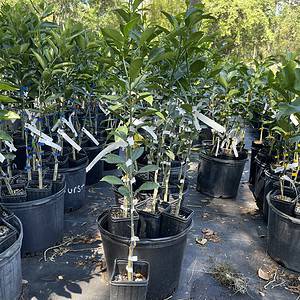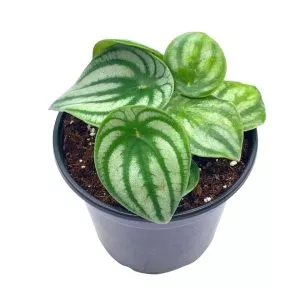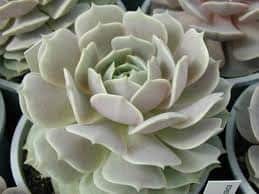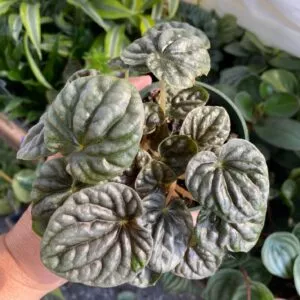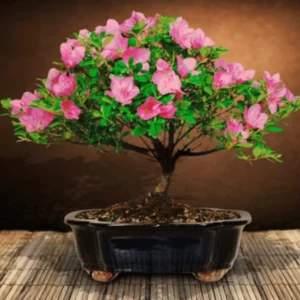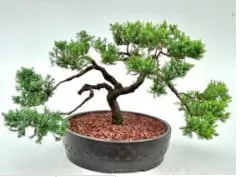No products in the cart.
Table of Contents
Now do not get confused with the Asparagus growing in your garden. Asparagus Ferns is not edible, but it looks fabulous in a houseplant collection.
Another notable thing about the Asparagus Fern plant is that it is not a common indoor plant found everywhere. But if you can get your hands on one (and we know where to find them), the light feathery foliage is impressive, and the good news is you can grow it indoors with success.
So if you want one of these fast-growing tropical perennials and want to learn the ins and outs of the Fern Asparagus, keep your eyes focused on the screen.
Asparagus Fern Classification
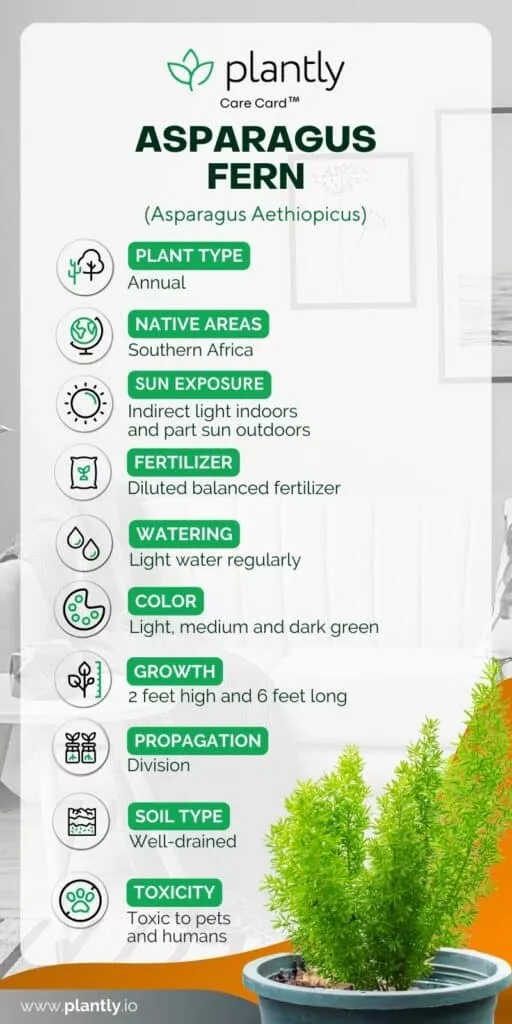
What is the Asparagus Fern?
One thing about fern Asparagus is that it is an exceptional outdoor plant. Yet, you find more people placing them indoors. The reason is that it has feathery leaves and grows tremendously fast.
The green foliage cheers up any home, and did you know if you’re a beginner gardener, you will have no problem taking care of this plant?
Now, where does it originate from, and why is it called plant Asparagus? The tropical plant comes from South Africa, and you can find them growing in forests everywhere.
But they do not belong to the fern family but the lily species. The Liliaceae also belongs to the family of daylilies, hostas, tulips, and amaryllis.
The plant proliferates outdoors in humid climates and gifts your white flowers.
Asparagus Fern Care
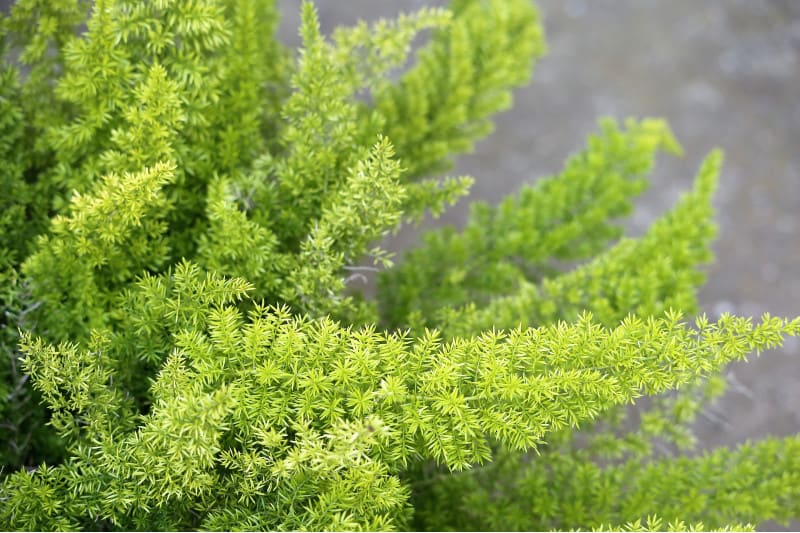
You will love the textural dimension Asparagus Fern provides to any living space. Yet, be cautious as it is a creeper, and inside, a notable tip is to keep it bushy.
The last note is of importance. It is a toxic plant to pets and kids when eaten. Okay, enough of the blabbering, let’s start taking care of your fern, Asparagus.
Asparagus Fern Lighting Requirement

Remember, these are not true ferns that spend loads of time sunbathing. It is part of the lily family and prefers bright, indirect light. Those small leaves are vulnerable and dry out fast.
So, as an indoor houseplant, never place it in direct sun or close to a south-facing window. Preferably, put it at an east-facing window to enjoy the sun in the morning.
Guess what? You can place the Sprengeni on your desk as it thrives in artificial light.
Asparagus Ferns Soil Requirement
Go with something rich such as all-purpose soil and a good choice. To increase nutrient levels and acidity, it also helps to add peat moss to the mix. Your plant will love it; you can plant it in containers with enough drainage holes.
Grown outside, it also enjoys rich, well-drained soil. Doing this allows for breathability in the tubers, keeping your fern plant as happy as possible.
Asparagus Fern Care Water Requirement
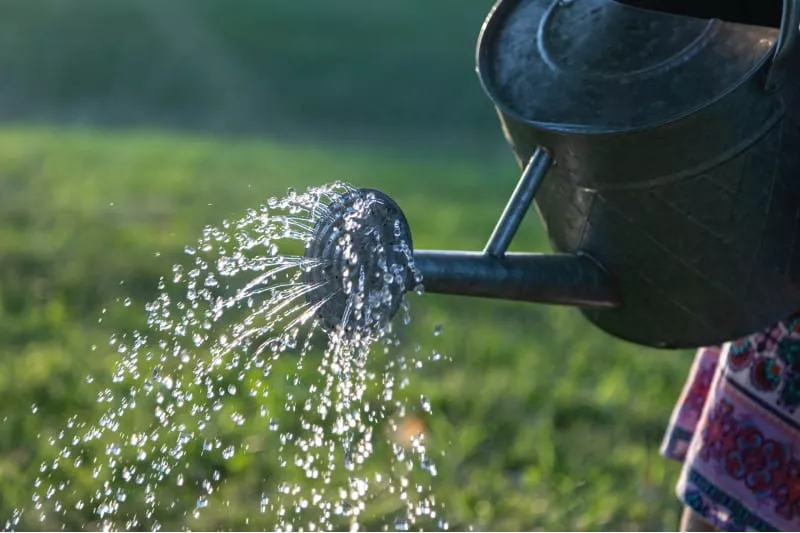
Okay, now do not go and drench the plant with water. It prefers light water regularly and can tolerate drier soil to an extent. So keep things even as it has delicate leaves that damage easily.
Another thing this plant is very sensitive to is chlorinated tap water. Thus, if you use tap water, leave it to stand overnight before watering your plant.
Now, this is where things become tricky: keeping your foliage hydrated. Boy, it takes effort as it thrives in humidity. Occasionally, mist your Asparagus ferns but focus on the arching stems.
A tip is to check if the plant becomes droopy or turns brown and a sign it needs more water. Keep it well-watered outdoors to prevent the ground from drying out completely.
Fern Asparagus Temperature and Humidity Requirement
The best temperature for your Asparagus fern is one that is warm, around 70 degrees F but not below 55 degrees F. One thing the Densiflorus Sprengeri, another variety of Asparagus and both love, is high humidity.
A tip to do this is to spray it weekly or place it on a pebble tray to keep the leaves in tip-top shape. The nice thing is a pebble tray looks attractive and adds some decor touch to any home.
Asparagus Fern Fertilizer Requirement
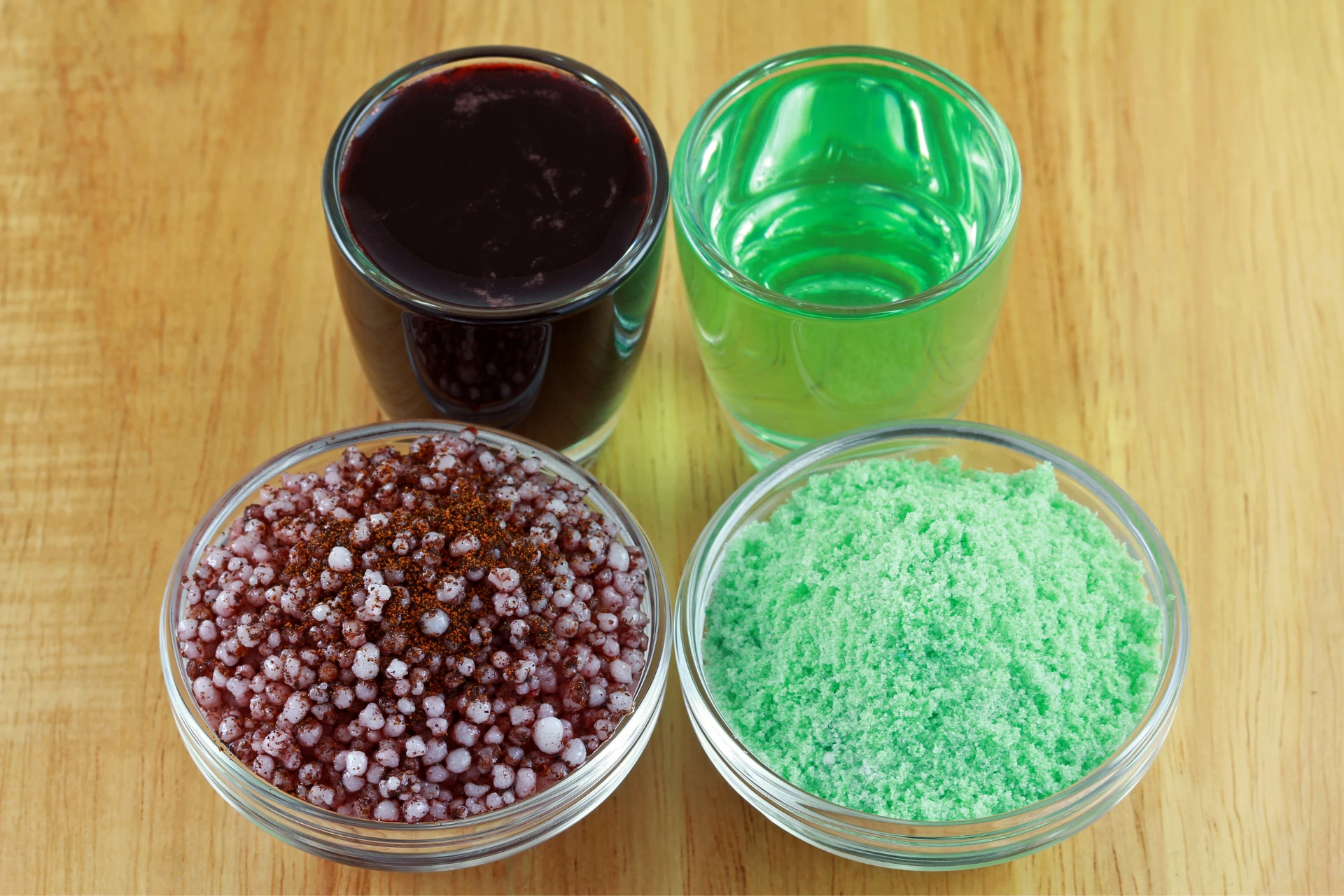
Okay, your body needs nourishment, right? The same goes for the Asparagus Densiflorus or any other varieties of Asparagus plants.
You can use a balanced fertilizer if it stands inside the home, but we recommend diluting it to half-strength to prevent burning the leaves and roots. During the summer, provide it with weekly feedings but halt when in winter as it only needs feeding once a month.
Asparagus Fern Potting
When gardening and Asparagus fern care, you can already see it is not that difficult. So potting, repotting, and growing this plant is easy to care for. For indoor plants, use well-drained potting soil, and outside, the same applies.
Now, one thing the Asparagus fern plant does not mind is feeling a bit pot-bound. So give a clap of the hands as you only need to transplant the fern plant every two years. A great tip when doing this is to divide the Asparagus ferns into big clumps. Also, make sure to take multiple of the roots when you divide them.
Place your plants in the correct-sized pots to help retain new growth. The reason is that as a houseplant they are slow spreaders. The exciting news is that you can grow your Asparagus fern from seeds.
Yip, it comes from the berries. But, remember, it is poisonous. So how do you plant the Asparagus fern seeds? The crucial thing is to soak them overnight and plant them in 1/4-inch trays inside. The germination can take up to eight weeks before you can transplant them again.
Asparagus Fern Care Propagation
To grow Asparagus is easily done by planting the seeds you find in its berries. But there is another more straightforward way that is faster. You can dig up the plant and divide the roots.
The best time to do this is in spring. You can dig up the whole Asparagus fern plant in the garden or remove it from the pot. Divide them into sections, ensuring each one has a root to help grow new shoots.
Then, place them individually into pots or in the garden area outside. One more helpful tip is to keep the plants shaded until they start to grow.
Asparagus Fern Growth Zone

If you live in the USDA hardiness zones nine and above, this creeper will mainly thrive happily. Outside the recommended zones, you can grow your Asparagus Fern indoors.
Asparagus Fern Diseases & Pests
Yes, we can already see your face and start to stress that your fern will die. However, there is no need to fret as we have all the inside news on the Asparagus fern care to resolve diseases and pests.
Yellow Needles or Fronds
This is a clear sign that your Asparagus fern is dehydrated caused by too much sunlight or not regular watering. While it might not rejuvenate new growth, new ones can appear at the base if you improve the growing condition.
We recommend providing your plant with only two hours of sunlight and allowing the top third of the soil to dry.
Yellow Needles Dropping Off
Yes, you want to cry as you feel your Asparagus ferns dying. But there is some light ahead in some specimens. Suppose the stems are crisp; prune them an inch from the tuber surface ( it looks like a potato), and place them in a transparent bag with small holes. Keep the soil moist with indirect light.
You will notice new arching stems developing, showing it is recovering, yeah. Keep it sealed for another month before releasing it back to fresh air.
Browning Needles
This is another sign of dehydration but can also be of dry air. Remove your plant if it is too close to a heater, and provide it with a pebble tray to improve the humidity.
Root Rot
Happens when your Asparagus is in dark environments for too long, and the soil remains wet. You notice the leaves yellowing, and it has stopped growing, leading to a brown rotten base. The best for your foliage is to remove it from the container to inspect the health of the roots.
You can save your plant if the roots are yellow by placing it in fresh soil. Yet, if it is mushy and brown, you must act now. First, remove the mushy roots while leaving the healthy ones alone. Then, clean the container with soapy water to remove harmful pathogens.
Rinse the roots with lukewarm water and plant them in the sterilized container.
Some of the common pests you can look out for are:
- Spider mites
- Aphids
- Mealybugs
You can use insecticidal soap to rid your Asparagus ferns of these insects.
-
$70.00Sold By: Andy Nursery
$75.00In stock
Yuzu Mandarin Grafted Citrus Tree 3 Feet Tall. Free Shipping
Sold By: Andy Nursery -
$10.99Sold By: BubbleBlooms
$12.99In stock
Watermelon Peperomia, Peperomia argyreia, water melon begonia, in a 4 inch pot, live rooted potted rare succulent
Only 976 available and it’s in 4 people’s basketRated 4.81 out of 5 based on 279 customer ratings02Sold By: BubbleBlooms -
$40.00Sold By: NEEPA HUT
In stock
6″ Lipstick black pagoda + Striped Noir Planter Basket
Only 3 available and it’s in 3 people’s basketRated 4.99 out of 5 based on 221 customer ratings10Sold By: NEEPA HUT
Asparagus Fern Varieties and Similar Plants
Foxtail Fern
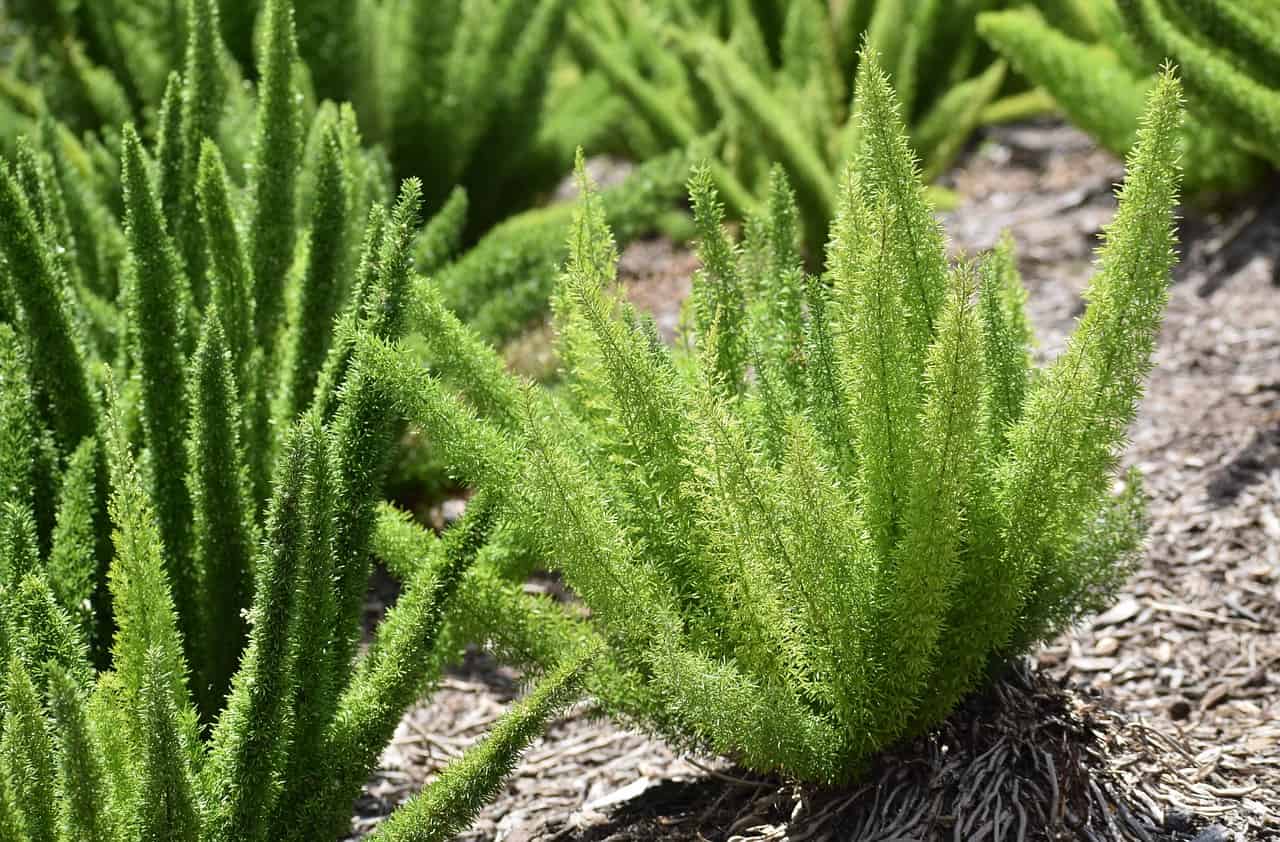
Also known as the Asparagus Densiflorus Meyeri has bushy plumes resembling a foxtail. It has arching plumes with a lot of needles with a light-green tint and is very delicate. Similar to the Asparagus fern plant, it gives you tiny white flowers with red berries.
Sprengeri Fern

Sprenger Asparagus or just Sprengeri has long arching leaves covered with soft needles. The plant has emerald green foliage similar to other fern plants. It also blooms with clusters of white flowers and green berries that turn red.
Asparagus Aethiopicus
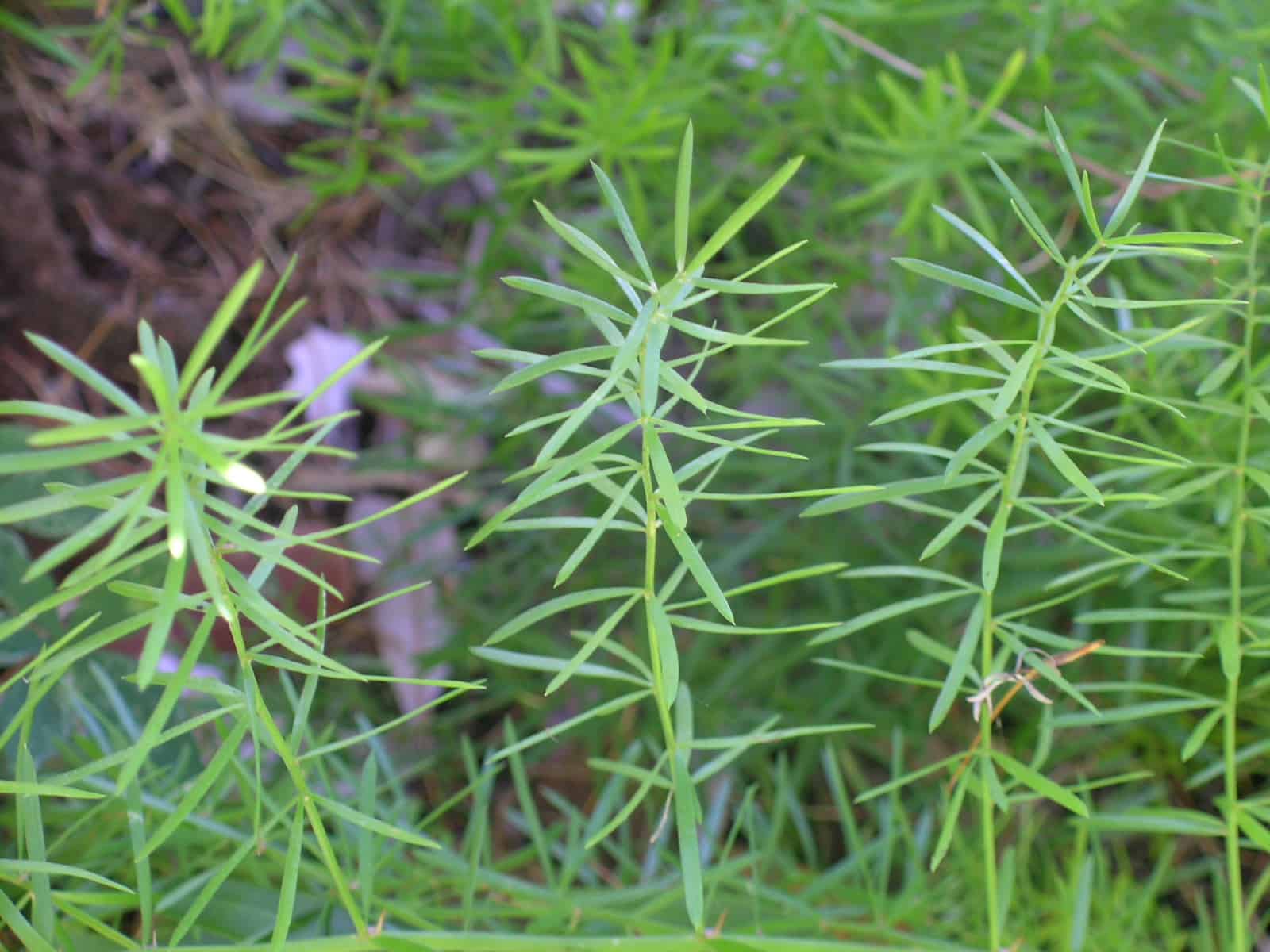
It would be best to not confuse yourself with this species and the one above. This is another variety of the Asparagus and is a perennial climber with a firm woody stem armed with long rigid recurved spines.
The foliage is a flattened stem and ridged with sharp points of grey/green. It also produces star-like white flowers with red berries that are not to be eaten.
Frequently Asked Questions
It is a sign that your plant needs more water or has been exposed to the sun for too long. We recommend moving the plant and providing it with indirect light, and water it with only the top third of the ground being dry.
Asparagus ferns you can easily grow from the tubers by doing the following:
- Look for a well-grown fern, burrow a wide opening around the plant, and push the spade underneath to lift the tubers.
- Before planting the tubers, water them to accelerate growth.
- You can cut or divide them into small pieces to fit the pot size you have. Some tips are to let the plant run under water removing the soil particles with your hand. Do not harm the roots as they are delicate. Take a sterilized knife and cut the fern into two sections, from the leaves to tubers.
- Take some peat mix soil and plant the tubers separately in a pot and water, allowing it to drain out. Keep the Asparagus fern plant in a moist condition to help the germination process.
The plants are used as a medicinal herb for bee stings, heart problems, and dizziness. Sometimes it is used as a laxative, and others believe it livens up things sexually (but we would not suggest eating the berries.)
Yes, as long as you place them in a spot that can get bright light like a glass window or with sheer curtains. High temperature and in a well-draining potting mix.
Whether you want to buy, sell, or simply reach out to other plant enthusiasts, Plantly is the right place to be!
-
$7.99 – $9.99Sold By: Succulent Oasis
In stock
Echeveria ‘Lola’ Succulent | Beautiful Rosette in Shades of Pale Green and Lavender
Rated 4.84 out of 5 based on 352 customer ratings05Sold By: Succulent Oasis -
$12.00Sold By: Smoot's Farm
In stock
Peperomia Caperata Radiator Plant Emerald Green Ripple 4 Inch Pot Live Plant
Rated 4.89 out of 5 based on 27 customer ratings00Sold By: Smoot's Farm -
Free Shipping$193.17Sold By: BONSAI WORLD LLC
In stock
Pink flowering Medium azalea bonsai tree
Sold By: BONSAI WORLD LLC -
Free Shipping$750.09Sold By: BONSAI WORLD LLC
Only 1 left in stock
Juniper Bonsai Tree – Trained (juniper procumbens nana)
Sold By: BONSAI WORLD LLC

